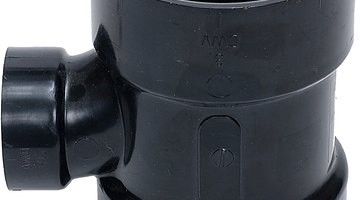How to Make PVC Resin
Polyvinyl chloride, or PVC, is a common household plastic. One of the best ways to mend cracked PVC pipes and other materials is to use PVC resin. Making this is surprisingly easy. PVC resin "melts" into the substrate, making a bond potentially as strong as if the break never happened.

Things You Will Need
- Glass container
- Breather mask
- Smock
- Disposable latex gloves
- Acetone (nail polish remover)
- PVC pipe or sheet
- Drill
- 1/2-inch drill bit
Best of all, the method involves using PVC and household chemicals.
-
Drill into a section of PVC pipe or a sheet, creating shavings. Scrape these shavings from the work surface into a glass container and fill it about a quarter full. Don a smock, latex gloves and breather mask.
-
Introduce acetone or nail polish remover slowly into the shavings. Allow a few seconds for the PVC shavings to begin to melt from being immersed in the acetone. Apply more acetone or shavings until you reach the desired consistency.
-
Mix the resin with a non-plastic stick or spoon until the shavings are gone and only a liquid or putty remains.
-
Smear the mixture into the crack or break in the PVC or plastic item. The acetone in the mix will react to the substrate, chemically welding itself and sealing the damage.
Tip
The blue or purple cement commonly used to bond PVC pipe joints is essentially a diluted acetone mixture. The joint welds together from the slight melting of the plastics.
Warning
Always use caution around acetone. It will remove finishes, leather colorings and stain clothing.
Always work in a well-ventilated space when working with solvents, including acetone.
References
Tips
- The blue or purple cement commonly used to bond PVC pipe joints is essentially a diluted acetone mixture. The joint welds together from the slight melting of the plastics.
Warnings
- Always use caution around acetone. It will remove finishes, leather colorings and stain clothing.
- Always work in a well-ventilated space when working with solvents, including acetone.
Writer Bio
David Lipscomb is a professional writer and public relations practitioner. Lipscomb brings more than a decade of experience in the consumer electronics and advertising industries. Lipscomb holds a degree in public relations from Webster University.
Photo Credits
- Zedcor Wholly Owned/PhotoObjects.net/Getty Images
- Zedcor Wholly Owned/PhotoObjects.net/Getty Images
More Articles



